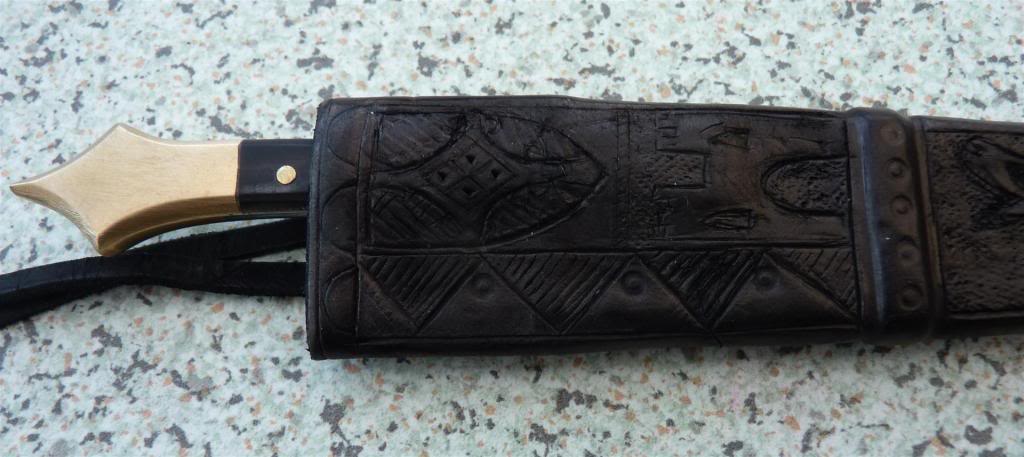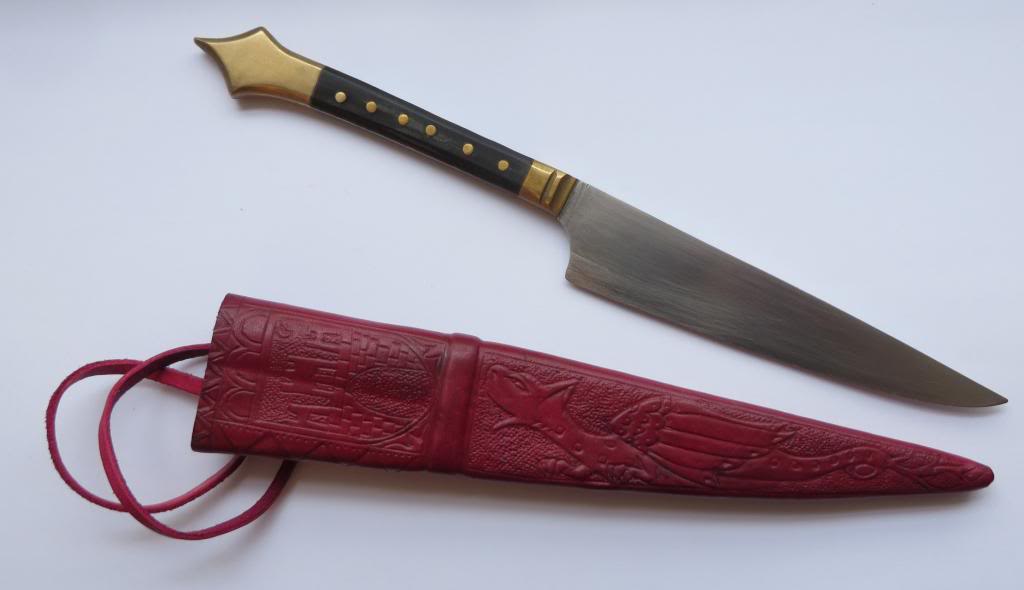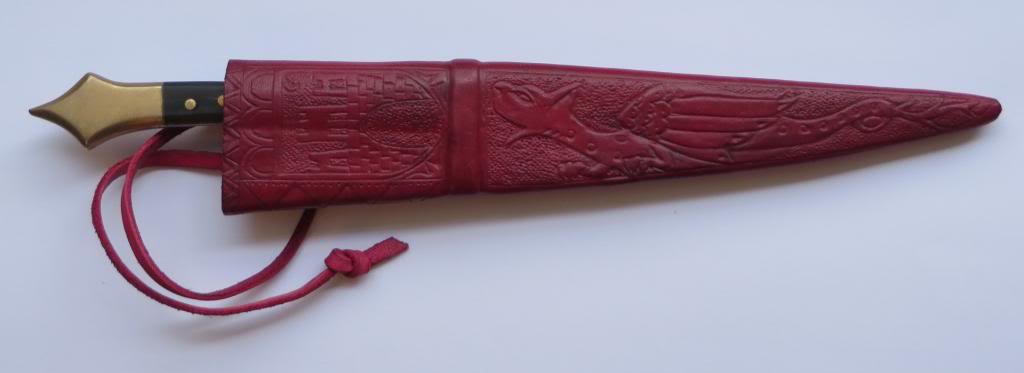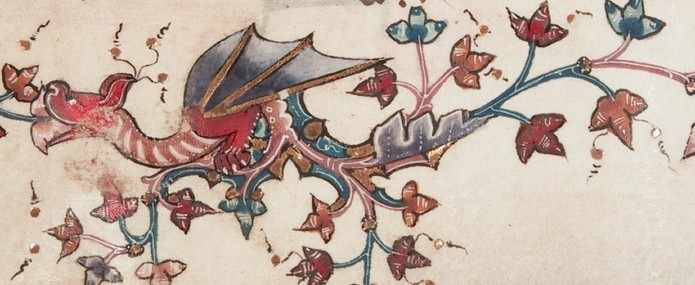I'm glad I did practice on this before tackling something bigger again. I find leather carving especially hard (the forming, sewing, of the scabbard I find relatively straight forward).
I had a dragon beast design in mind from the book "knives and scabbards" for a long time now. I carved it on a dagger handle (documented somewhere on this forum) but was not satisfied because I overworked the leather trying to get the correct tracing done...and that's my problem. I approach leather carving pretty much like drawing, searching for the right line scratching away as I go. With leather it can't work that way. Once you've cut the leather, you have to be happy with it and move on. Tool wise, I have yet to find what works best for me. Also I soak the leather way too much before starting.
Anyway, pictures of the attempt below. I stripped the upper layer of the scabbard and binned it right after dying it. Too much scratching going on, too damn clumsy, but again, useful as a learning curve and I'd rather make mistakes on a 1.5 hour job like this than on a top grain full length sword scabbard.




Moving on, I've decided to have a design completed before starting the carving (these things are supposed to be done freehand and quickly, so I'm taking a different approach here). I'll transfer the pattern on the leather and will carve it from there). This beast is inspired by a dragon found on a 15th century manuscript. I'll give it a go again as soon as I can have a couple of hours to spare.





